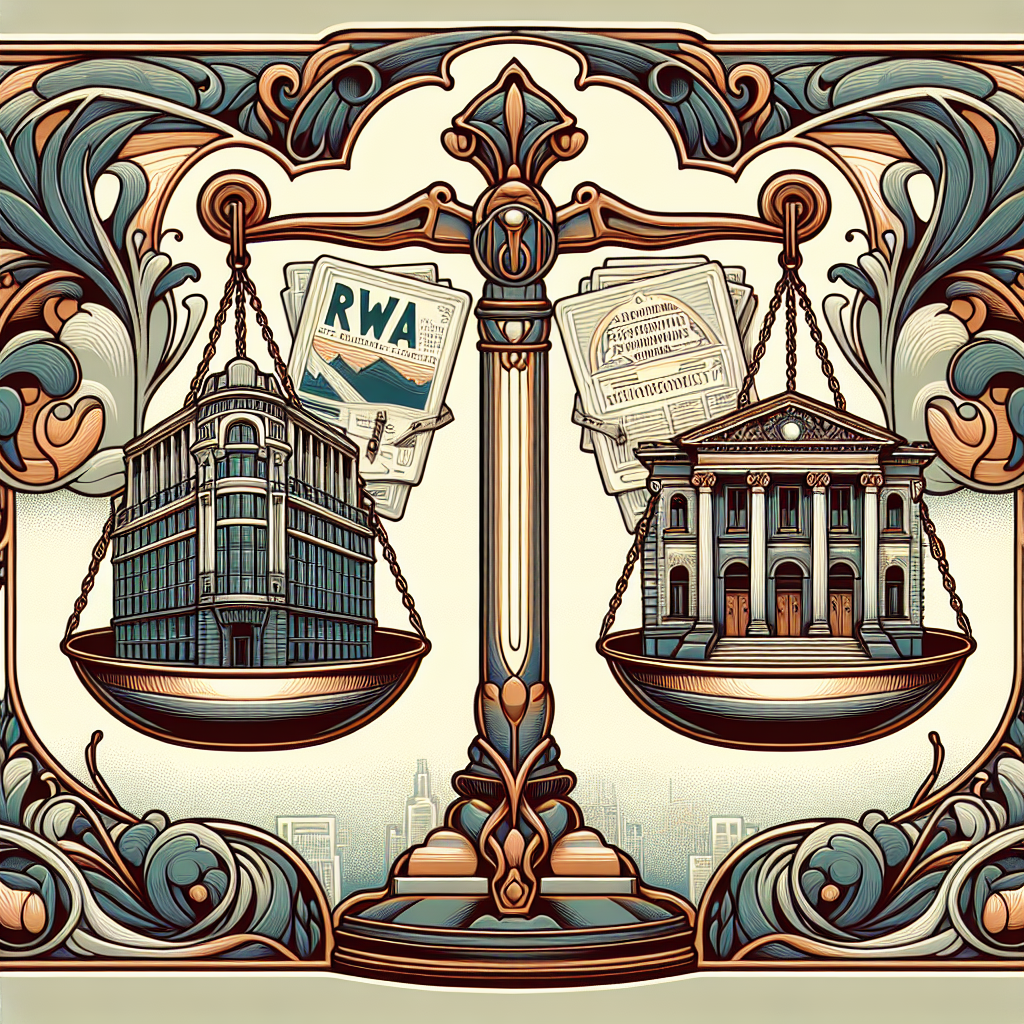The Legal Battlefield: Fractional Ownership vs. Securitized Tokens in RWA Investments

In the rapidly evolving landscape of tokenized real-world assets (RWAs), a critical legal distinction is emerging that threatens to reshape the entire industry: the difference between true fractional ownership and securitized tokens. What might seem like mere legal semantics could dramatically impact your investment rights, tax obligations, and the regulatory scrutiny these assets face.
The Devil's in the Definitions
As my grandmother used to say, 'If you don't read the fine print, the fine print will read you' – a principle particularly applicable to the RWA space in 2025.
At first glance, fractional ownership tokens and securitized tokens appear similar – both allow investors to own portions of otherwise inaccessible assets. However, their legal structures create a world of difference:
Fractional Ownership Tokens
- Direct ownership stake: Represents an actual slice of the underlying asset
- Legal structure: Similar to tenancy-in-common arrangements
- Rights: Direct claim to proportionate rental income or profits
- Decision-making: Often unclear governance structure (which, as you might imagine, can lead to some fascinating disputes)
Securitized Tokens
- Indirect ownership: Represents a security interest in an entity that owns the asset
- Legal structure: Functions more like traditional securities (stocks, bonds)
- Rights: Contractually defined stream of benefits
- Decision-making: Typically centralized management structure
The Regulatory Reckoning
The SEC has been sharpening its enforcement tools throughout 2024 and 2025, with several key developments:
The establishment of the SEC's Crypto Task Force in early 2025 signaled a more structured approach to digital asset regulation. Their focus? Determining which tokens qualify as securities under the ever-looming Howey Test – a legal standard that's been giving RWA issuers night sweats since 1946.
Notably, the SEC has taken a particular interest in projects where tokens grant holders rights to cash flows without clear ownership rights in the underlying assets. In one case, a well-known platform faced enforcement action for issuing tokens tied to real estate cash flows while marketing them as 'ownership shares' – a distinction that cost them millions in settlements.
The regulatory review process for RWA issuers has also grown increasingly meticulous, with SEC reviews taking significantly longer for crypto-related filings compared to traditional securities – a bureaucratic purgatory that one token issuer described as 'watching paint dry, if the paint were made of your investors' money.'
Investor Rights: What You Actually Own
The practical implications for investors are substantial:
Fractional Ownership Token Holders
With true fractional ownership tokens, investors theoretically hold direct rights to the underlying asset. This means:
- Direct claim to your portion of rental income or profits
- Potential eligibility for IRC §1031 like-kind exchanges (deferring capital gains taxes)
- Less regulatory protection, as these may fall outside securities laws
- Unclear governance and decision-making mechanisms
The direct ownership model raises practical questions that courts are only beginning to address: How do 10,000 token holders collectively decide whether to repair a tokenized apartment building's roof? What happens when one token holder wants to inspect 'their' portion of a tokenized warehouse?
Securitized Token Holders
For securitized tokens, investors hold an interest in an entity that owns the asset, which means:
- Clearer governance structure with defined decision-making processes
- Greater regulatory protections under securities laws
- Potentially higher compliance costs passed to investors
- Different tax treatment (typically ineligible for §1031 exchanges)
Tax Implications: The Silent Wealth Killer
Perhaps nowhere is the distinction more financially meaningful than in taxation. The classification of your token can dramatically impact your tax obligations:
Fractional Ownership
Under current IRS guidance, true fractional ownership tokens may qualify for favorable tax treatment:
- Potential eligibility for IRC §1031 like-kind exchanges, allowing investors to defer capital gains taxes when exchanging one real estate investment for another
- Direct pass-through of depreciation benefits for real estate
- Treatment as property for tax purposes, with corresponding benefits and obligations
Securitized Tokens
Securitized tokens face different tax considerations:
- Generally ineligible for §1031 exchanges
- Subject to capital gains taxes upon sale
- Potential double taxation issues depending on the entity structure
In one notable case, investors in a popular RWA platform were shocked when the IRS classified their tokens as securities rather than direct property interests, eliminating their planned tax deferrals and resulting in substantial unexpected tax bills. Let's just say their Crypto Twitter rants were... colorful.
The Practical Reshaping of the RWA Landscape
These legal distinctions are already reshaping market structures. We're witnessing:
- Bifurcation of the market: Platforms increasingly specialize in either true fractional ownership or securitized tokens
- Standardization efforts: Industry groups developing frameworks to clearly distinguish token types
- Legal innovation: New hybrid structures attempting to capture benefits of both approaches
- Jurisdiction shopping: Projects seeking favorable regulatory environments
Smart issuers now focus on legal structure first and technology second – quite the reversal from the 'code is law' ethos of earlier crypto years. As one project founder recently quipped, 'We spent six months with lawyers for every one month with developers. Welcome to RWA 2.0.'
What This Means For Your Investment Strategy
For investors navigating this evolving landscape, consider these key takeaways:
- Read the fine print: Understand exactly what rights your tokens convey
- Consider your tax situation: Consult tax professionals regarding implications for your specific circumstances
- Evaluate governance mechanisms: Consider how decisions about the underlying asset will be made
- Watch regulatory developments: The legal landscape continues to evolve rapidly
- Diversify across structures: Different token types may perform differently under various regulatory scenarios
The Future Battlefield
As we look ahead, several key legal battles will likely define the future of tokenized RWAs:
- Court precedents: Upcoming cases will establish critical legal interpretations
- Regulatory clarity: The SEC's Crypto Task Force is expected to issue more specific guidance
- International harmonization: Efforts to standardize treatment across jurisdictions
- Industry self-regulation: Development of best practices and standardized disclosures
The distinction between fractional ownership and securitized tokens may seem technical, but it represents a fundamental fork in the road for the entire RWA ecosystem. Those who understand these distinctions will be better positioned to navigate the opportunities and risks in this rapidly evolving space.
As we often say in the investment world: in the short run, markets are voting machines, but in the long run, they're weighing machines. When it comes to RWAs, the legal scale is increasingly tipping toward clarity, compliance, and careful structuring – factors that will ultimately separate successful projects from those that become cautionary tales.
After all, in the world of tokenized real-world assets, what you own is only as valuable as your legal right to own it.




